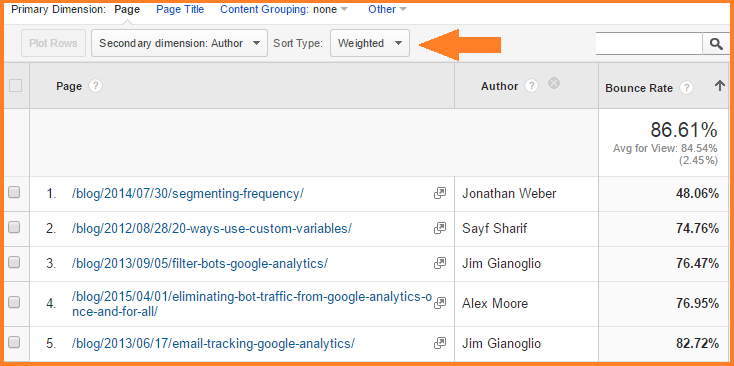Opening the Power of Second Dimension Analytics for Improved Data Insights and Decision-Making
In the realm of data analytics, primary dimensions frequently take the limelight, but real deepness of insights lies within the world of additional measurements. These additional information factors supply a nuanced point of view that can light up relationships and patterns not easily obvious initially look. By using the power of additional measurement analytics, organizations can unveil concealed fads, discover connections, and remove extra meaningful conclusions from their information. The capacity for improved decision-making through the use of these secondary dimensions is huge, promising a much deeper understanding of complicated data sets and leading the method for more informed tactical options.
Relevance of Secondary Measurements
Checking out the value of additional measurements in analytics unveils the concealed layers of information understandings vital for educated decision-making in various domain names. Secondary measurements give a much deeper understanding of main information by supplying added context and perspectives. By integrating secondary measurements right into analytics, companies can remove a lot more nuanced and thorough understandings from their datasets.
One key relevance of second dimensions is their ability to section and categorize main information, enabling a more in-depth analysis of details subsets within a dataset. When looking at the information as a whole, this division allows services to identify patterns, patterns, and outliers that could not be apparent. Moreover, secondary dimensions help in discovering connections and reliances between different variables, leading to more precise projecting and anticipating modeling.
Additionally, second measurements play an important function in improving data visualization and coverage. By adding secondary measurements to visualizations, such as charts or charts, experts can develop more informative and useful representations of information, assisting in much better interaction of searchings for to stakeholders. On the whole, the assimilation of second measurements in analytics is instrumental in opening the complete possibility of data and driving evidence-based decision-making.
Key Advantages of Using Secondary Dimensions
Utilizing secondary measurements in analytics uses organizations a calculated advantage by augmenting the depth and granularity of data understandings. By exploring data utilizing second dimensions such as time, place, gadget kind, or user demographics, companies can reveal patterns, fads, and connections that may or else remain concealed.
Additionally, the application of secondary measurements improves the context in which key information is translated. By leveraging secondary measurements in analytics, organizations can harness the complete possibility of their information to drive far better decision-making and accomplish their service objectives.
Advanced Information Analysis Techniques
A deep dive right into advanced information analysis techniques reveals advanced methods for removing useful insights from complicated datasets. One such strategy is maker learning, where formulas are used to recognize patterns within information, forecast end results, and make data-driven choices. This approach permits the automation of logical model structure, making it possible for their website the processing of huge volumes of information at a much faster rate than traditional methods.
Another advanced technique is predictive analytics, which makes use of analytical algorithms and maker knowing methods to anticipate future end results based upon historical information. By examining trends and patterns, businesses can prepare for client behavior, market patterns, and possible risks, encouraging them to make aggressive choices.
Furthermore, text mining and view analysis are valuable strategies for extracting understandings from disorganized data resources such as social media sites comments, customer reviews, and survey responses. By analyzing message data, organizations can comprehend client opinions, recognize emerging trends, and boost their services or items based upon feedback.
Enhancing Decision-Making Via Secondary Measurements

Enhancing decision-making with secondary dimensions makes it possible for businesses to make more educated and targeted strategic selections. By segmenting consumer information based on additional dimensions like acquiring background or engagement levels, companies can customize their marketing techniques to particular audience segments, leading to boosted conversion rates and client contentment. Furthermore, additional dimensions can help identify correlations and relationships in between various variables, enabling organizations to make data-driven choices that drive growth and profitability.
Carrying Out Secondary Dimension Analytics
When integrating additional dimensions in analytics, organizations can open deeper understandings that drive tactical decision-making and boost total efficiency. This entails recognizing the specific concerns the organization looks for click to respond to and the data factors required to resolve them.

In addition, organizations must take advantage of advanced analytics tools and technologies to enhance the procedure of incorporating additional dimensions. These tools can automate data handling, analysis, and visualization, enabling organizations to concentrate on translating insights as opposed to hands-on data control.
Verdict
Finally, second dimension analytics play an essential duty in boosting data insights and decision-making processes. By utilizing advanced information evaluation strategies and implementing additional dimensions efficiently, organizations can unlock the power of their information to drive calculated organization choices. The vital benefits of making use of second measurements can not be overemphasized, as they offer a much deeper understanding of data patterns and partnerships. It is vital for companies to leverage second dimension analytics to stay competitive in today's data-driven landscape.
In the world of data analytics, main measurements usually take the limelight, however the true depth of insights lies within the realm of second dimensions.Making use of secondary measurements in analytics offers companies a tactical benefit by increasing the deepness and granularity of data insights. By leveraging secondary dimensions in analytics, organizations can harness the full possibility of their information to drive much better decision-making and achieve their service objectives.
Executing information validation processes and regular audits can assist preserve data high quality and dependability.
By making use of sophisticated information analysis strategies and carrying out second measurements successfully, companies can open the power of their data to drive tactical business choices.